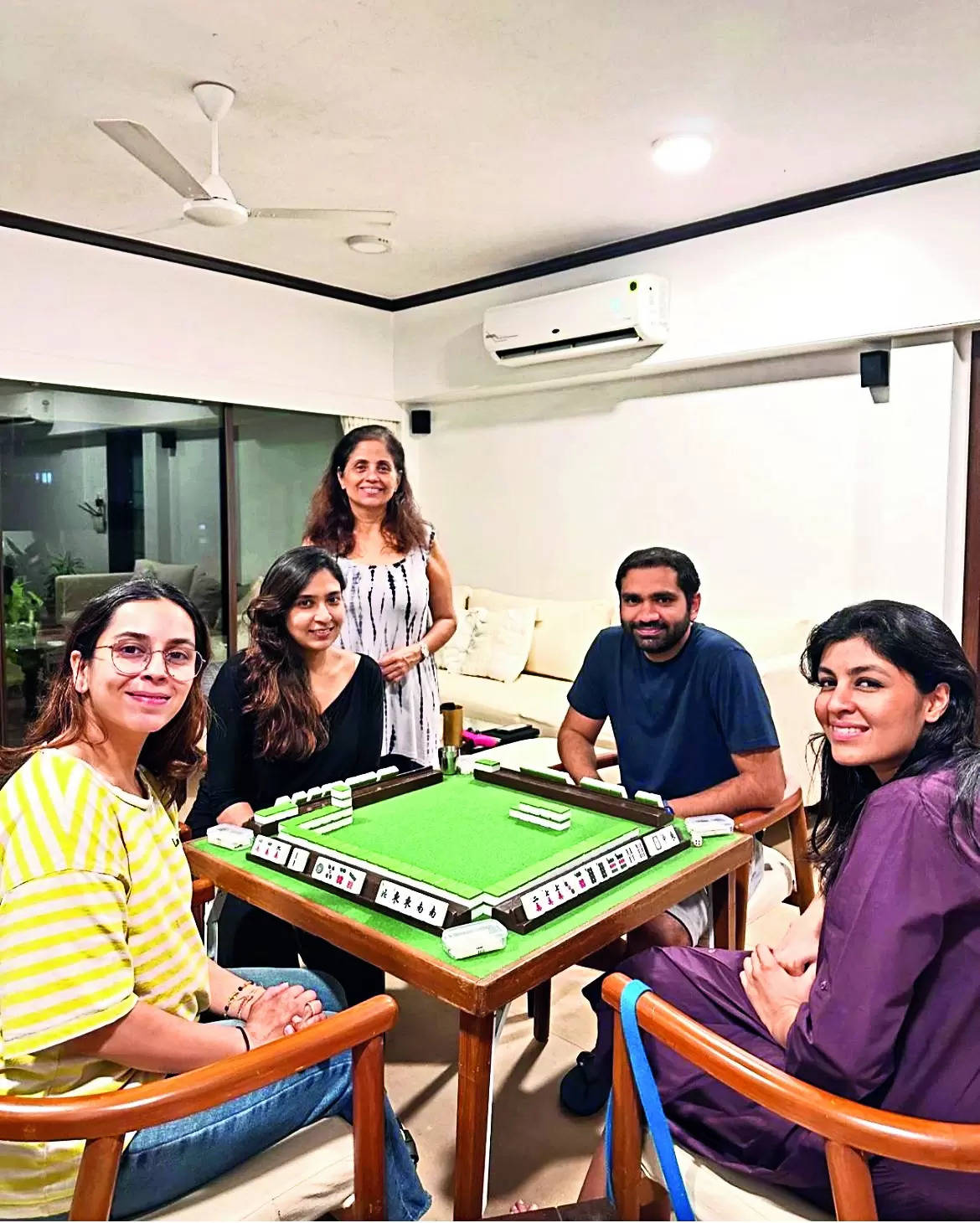
1 2 3 Pune: On many quiet afternoons 70-year-old Pune resident Rekha Krishan, makes her way to the Poona Club. Four pairs of hands circle the upside-down tiles, picking out a stack for themselves and then looking to see whether they have a matching sequence. Generous amounts of tea, coffee and snacks appear.
Then, with a roll of dice and the flip of stacked tiles, the game begins. The growing Mahjong club offers members a sense of belongingness. Believed to have been developed in 19th century China, Mahjong has zoomed up popularity charts over the last couple of months.

“We have a buzzing Mahjong community in the city. I started playing this game seven years ago and have taught over 500 women so far. There are players in the city who play both versions of Indian and American Mahjong,” said, Rekha Krishan.
She along with Sam Nanda and others have organised 50 Mahjong tournaments across cities and even online. Delhi-resident, 63-year-old Vineeta Sahni, learnt this game over 25 years ago and is still passionate about it. “Mahjong was popular among defence services wives.
They used to play when their husbands were away. I and my daughters learnt this game on the Mahjong set that my mother owned. The game and rules have evolved over the years,” she recalled.
Simply put, Mahjong is a game of skill and strategy that’s now being played at family get-togethers and social clubs. The game is said to be similar to the card game rummy, but it uses a set of 144 tiles based on Chinese characters and symbols. Mahjong is typically played by four players.
The goal is to form a complete hand, usually consisting of four melds (sets of three tiles) and a pair (two matching tiles). Melds can be formed by sequences of three consecutive numbers in the same suit, three identical tiles, or four identical tiles. However, rules vary in every region and gaming format.
Mumbai-resident Sangeeta Kewalramani, has been playing Mahjong for the last 16 years and teaching for the last five years. “I had become friends with some expats who taught me this game. For those who want to learn, a module of ten sessions is enough to get you started.
The basic rules of the game are the same, but every country has modified it to suit them. I also teach my students how to calculate scores,” she, said. Depending on the rules of the table, there are some who also treat it as a social gambling game where payouts are based on the final scores.
However, most people play Mahjong just for fun. Sharon Dhondy, another Mahjong player and teacher, has been a regular at popular family clubs in Mumbai like Willingdon Sports Club and CCI. “Mahjong is not a difficult game at all.
It is not something that requires intense focus or heavy thinking. It is challenging, but fun and that’s why it can be played by all age groups,” she, said. There is an American way of playing Mahjong as well as the original Chinese way.
While some people are playing the game as a multi-player one online, it is the offline version that has shot to popularity. A Mahjong game set costs anywhere between Rs 12,000- 14,000 and the racks cost Rs 8,000 – Rs 10,000. “The cost is usually divided by the four players so it’s not so expensive” said, Dhondy.
For many of the players the game is like an addiction and it’s also one that teaches life skills like patience, integrity, quiet and also teaches people how to make sense of the chaos. 3-4 rounds of the game formats can take about 2-2.5 hours to complete depending on the age and speed of the players.
“Mahjong is not an oldies game nor is it only a women’s game. We play at our family get-togethers and everyone enjoys it. Usually board games are associated with the older generation so maybe that’s why it has got the connotation,” said, a Mahjong player in Pune, who didn’t want to be named.
.













